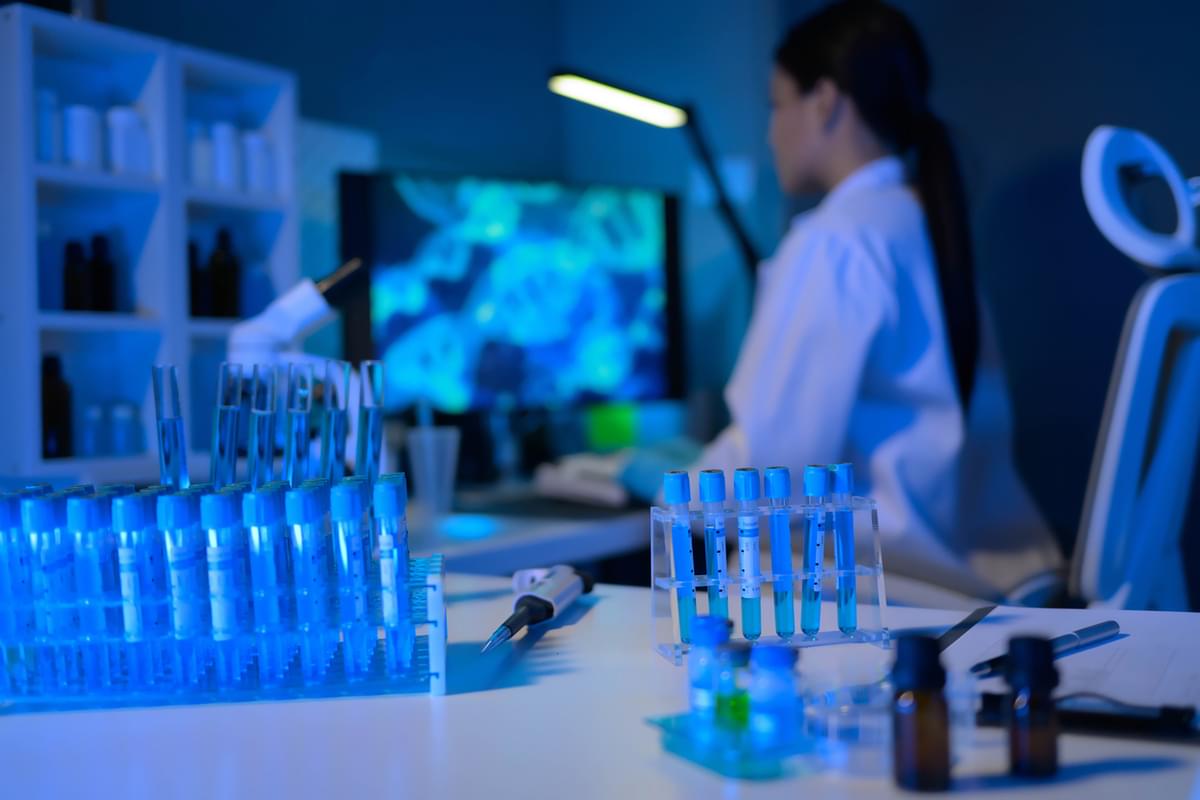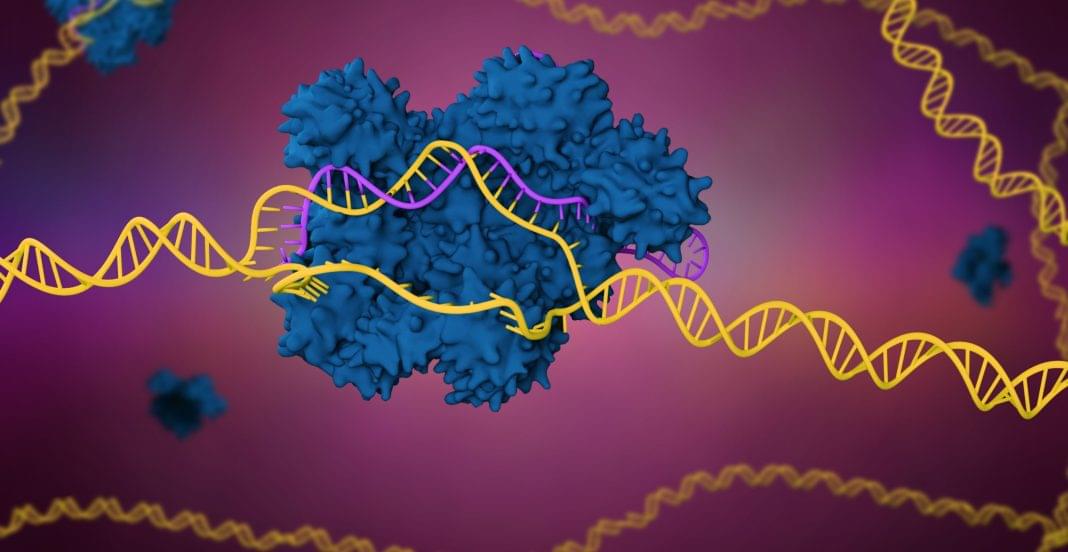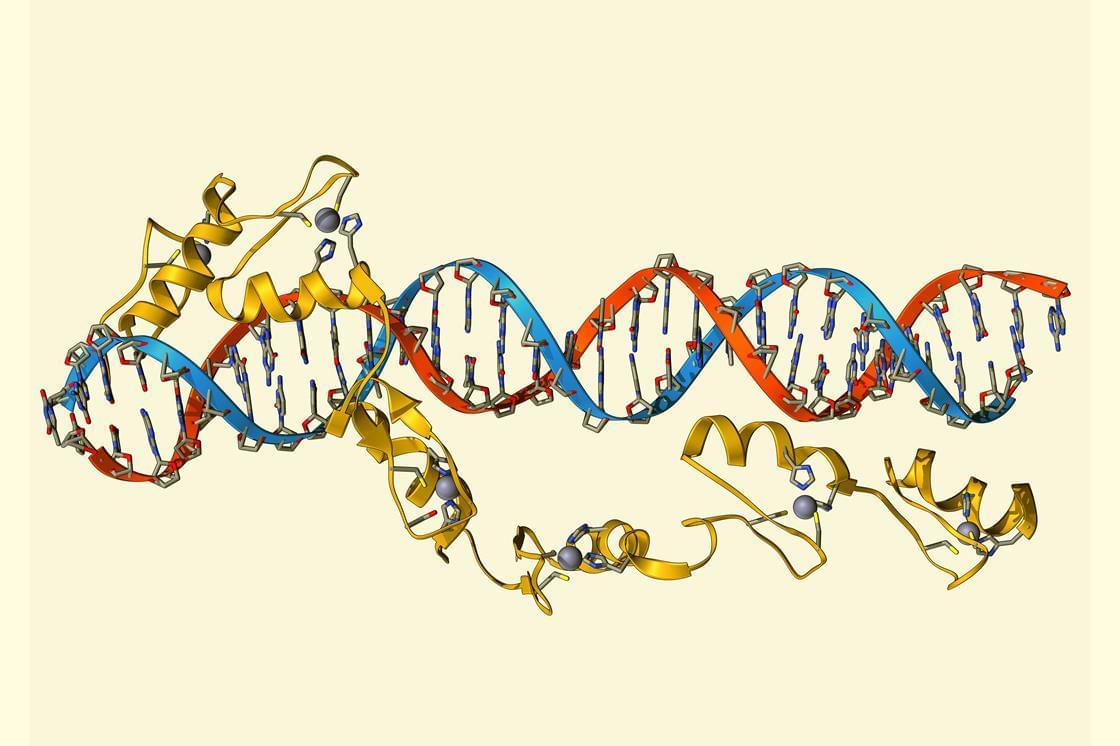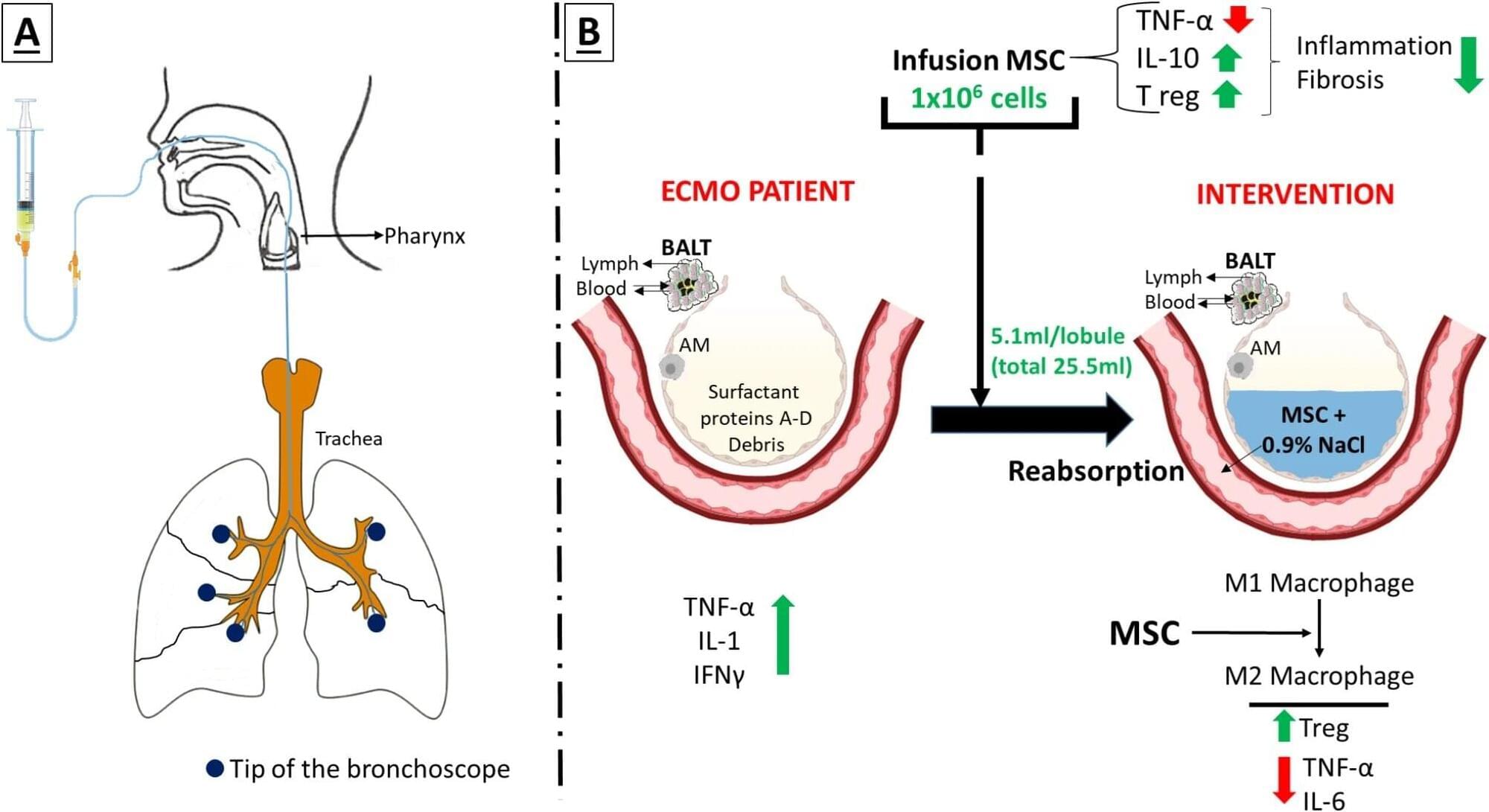Anyone can give you a brainwave menu and say “Go wild.”
Because it’s not about the tech. It’s about changing your life.
#EngineeringMindset #DIYSuccess #ImpactfulChange #EfficiencyMatters #WellnessJourney
Anyone can give you a brainwave menu and say “Go wild.”
Because it’s not about the tech. It’s about changing your life.
#EngineeringMindset #DIYSuccess #ImpactfulChange #EfficiencyMatters #WellnessJourney

Scientists from Mass General Brigham and Beth Israel Deaconess Medical Center have developed a novel gene editing tool called STITCHR. Unlike traditional CRISPR, STITCHR inserts entire genes at precise locations, minimizing unintended mutations. This gene editing tool simplifies use and offers potential as a one-time treatment for genetic disorders.
The technology uses retrotransposons, naturally occurring “jumping genes” found in all eukaryotic organisms, which can move and integrate into genomes. Using computational screening, the researchers identified and reprogrammed a specific retrotransposon to work with the nickase enzyme from CRISPR, forming the complete STITCHR system that allows a precise, seamless gene insertion into the genome.
STITCHR offers the potential to replace or supplement entire genes, creating a more universal treatment option for various genetic diseases. The research team is now working to improve its efficiency and move it toward clinical use. Their study, published in Nature, highlights how insights from basic cellular biology can drive innovation in genetic medicine and lead to new therapeutic tools.

While CRISPR-mediated gene editing has led to powerful advances across biology, medicine, and agriculture, challenges persist in optimizing the editing efficiency of enzymes, such as the widely used Cas9 nuclease. This is especially true in therapeutic use cases, where the goal is to attain high rates of editing via a relatively low and transient enzyme dose.
In a new study published in the April 2025 issue of The CRISPR Journal titled, “Hairpin Internal Nuclear Localization Signals in CRISPR-Cas9 Enhance Editing in Primary Human Lymphocytes,” researchers from the Innovative Genomics Institute (IGI) at the University of California (UC), Berkeley, present a strategy to improve editing efficiency in human immune cells for therapeutic applications by leveraging new constructs for nuclear localization signal (NLS) sequences.
“Efficient CRISPR enzyme production is essential for translation. This is one element that allowed the rapid clinical evaluation of Casgevy, the world’s first genome editing drug. Unfortunately, this aspect tends to be overlooked in the basic research performed in academia,” said Ross Wilson, PhD, assistant adjunct professor of molecular and cell biology at UC Berkeley, who led the new study.

Northeastern University researchers resurrected an extinct plant gene, turning back the evolutionary clock to pave a path forward for the development and discovery of new drugs.
Specifically, the team, led by Jing-Ke Weng, a professor of chemistry, chemical biology and bioengineering at Northeastern, repaired a defunct gene in the coyote tobacco plant.
In a new paper, they detail their discovery of a previously unknown kind of cyclic peptide, or mini-protein, called nanamin that is easy to bioengineer, making it “a platform with huge potential for drug discovery,” Weng says. The paper is published in the journal Proceedings of the National Academy of Sciences.


A multidisciplinary clinical team led by Professor Bernat Soria from the Institute of Bioengineering at the Miguel Hernández University of Elche (UMH, Spain) has developed a new method to deliver cell therapies in patients on extracorporeal membrane oxygenation (ECMO), a life support system used in cases of severe lung failure.
The advance has been published in Stem Cell Research & Therapy. The team has opted not to patent the technique in order to encourage its use in public health systems once further clinical testing is completed.
The method—named CIBA, for “Consecutive Intrabronchial Administration”—enables the delivery of stem-cell-based treatments directly into the alveoli of critically ill patients who cannot receive standard intravenous cell therapy due to the ECMO system’s constraints.
In a breakthrough with promising real-world applications, a team of Rutgers biophysicists, bioengineers, and plant biologists has captured the first live images.
In a groundbreaking study, researchers at Rutgers University-New Brunswick have captured continuous, 24-hour images of cellulose synthesis, the process by which plant cell walls are built, using living plant cells. This marks the first time the dynamic process of cell-wall construction has been observed in real time, offering critical insights that could lead to the development of more resilient crops, enhanced food production, and lower-cost biofuels.
Published in the journal Science Advances.
*This video was recorded at Foresight’s Vision Weekend 2025 in Puerto Rico*
https://foresight.org/vw2025pr/
Our Vision Weekends are the annual festivals of Foresight Institute. Held in two countries, over two weekends, you are invited to burst your tech silos and plan for flourishing long-term futures. This playlist captures the magic of our Puerto Rico edition, held February 21–23, 2025, in the heart of Old San Juan. Come for the ideas: join the conference, unconference, mentorship hours, curated 1-1s, tech demos, biohacking sessions, prize awards, and much more. Stay for fun with new friends: join the satellite gatherings, solarpunk future salsa night, beach picnic, and surprise island adventures. This year’s main conference track is dedicated to “Paths to Progress”; meaning you will hear 20+ invited presentations from Foresight’s core community highlighting paths to progress in the following areas: Existential Hope Futures, Longevity, Rejuvenation, Cryonics, Neurotech, BCIs & WBEs, Cryptography, Security & AI, Fusion, Energy, Space, and Funding, Innovation, Progress.
══════════════════════════════════════
*About The Foresight Institute*
The Foresight Institute is a research organization and non-profit that supports the beneficial development of high-impact technologies. Since our founding in 1986 on a vision of guiding powerful technologies, we have continued to evolve into a many-armed organization that focuses on several fields of science and technology that are too ambitious for legacy institutions to support. From molecular nanotechnology, to brain-computer interfaces, space exploration, cryptocommerce, and AI, Foresight gathers leading minds to advance research and accelerate progress toward flourishing futures.
*We are entirely funded by your donations. If you enjoy what we do please consider donating through our donation page:* https://foresight.org/donate/
*Visit* https://foresight.org, *subscribe to our channel for more videos or join us here:*
*This video was recorded at Foresight’s Vision Weekend 2025 in Puerto Rico*
https://foresight.org/vw2025pr/
Our Vision Weekends are the annual festivals of Foresight Institute. Held in two countries, over two weekends, you are invited to burst your tech silos and plan for flourishing long-term futures. This playlist captures the magic of our Puerto Rico edition, held February 21–23, 2025, in the heart of Old San Juan. Come for the ideas: join the conference, unconference, mentorship hours, curated 1-1s, tech demos, biohacking sessions, prize awards, and much more. Stay for fun with new friends: join the satellite gatherings, solarpunk future salsa night, beach picnic, and surprise island adventures. This year’s main conference track is dedicated to “Paths to Progress”; meaning you will hear 20+ invited presentations from Foresight’s core community highlighting paths to progress in the following areas: Existential Hope Futures, Longevity, Rejuvenation, Cryonics, Neurotech, BCIs & WBEs, Cryptography, Security & AI, Fusion, Energy, Space, and Funding, Innovation, Progress.
══════════════════════════════════════
*About The Foresight Institute*
The Foresight Institute is a research organization and non-profit that supports the beneficial development of high-impact technologies. Since our founding in 1986 on a vision of guiding powerful technologies, we have continued to evolve into a many-armed organization that focuses on several fields of science and technology that are too ambitious for legacy institutions to support. From molecular nanotechnology, to brain-computer interfaces, space exploration, cryptocommerce, and AI, Foresight gathers leading minds to advance research and accelerate progress toward flourishing futures.
*We are entirely funded by your donations. If you enjoy what we do please consider donating through our donation page:* https://foresight.org/donate/
*Visit* https://foresight.org, *subscribe to our channel for more videos or join us here:*
*This video was recorded at Foresight’s Vision Weekend 2025 in Puerto Rico*
https://foresight.org/vw2025pr/
Our Vision Weekends are the annual festivals of Foresight Institute. Held in two countries, over two weekends, you are invited to burst your tech silos and plan for flourishing long-term futures. This playlist captures the magic of our Puerto Rico edition, held February 21–23, 2025, in the heart of Old San Juan. Come for the ideas: join the conference, unconference, mentorship hours, curated 1-1s, tech demos, biohacking sessions, prize awards, and much more. Stay for fun with new friends: join the satellite gatherings, solarpunk future salsa night, beach picnic, and surprise island adventures. This year’s main conference track is dedicated to “Paths to Progress”; meaning you will hear 20+ invited presentations from Foresight’s core community highlighting paths to progress in the following areas: Existential Hope Futures, Longevity, Rejuvenation, Cryonics, Neurotech, BCIs & WBEs, Cryptography, Security & AI, Fusion, Energy, Space, and Funding, Innovation, Progress.
══════════════════════════════════════
*About The Foresight Institute*
The Foresight Institute is a research organization and non-profit that supports the beneficial development of high-impact technologies. Since our founding in 1986 on a vision of guiding powerful technologies, we have continued to evolve into a many-armed organization that focuses on several fields of science and technology that are too ambitious for legacy institutions to support. From molecular nanotechnology, to brain-computer interfaces, space exploration, cryptocommerce, and AI, Foresight gathers leading minds to advance research and accelerate progress toward flourishing futures.
*We are entirely funded by your donations. If you enjoy what we do please consider donating through our donation page:* https://foresight.org/donate/
*Visit* https://foresight.org, *subscribe to our channel for more videos or join us here:*